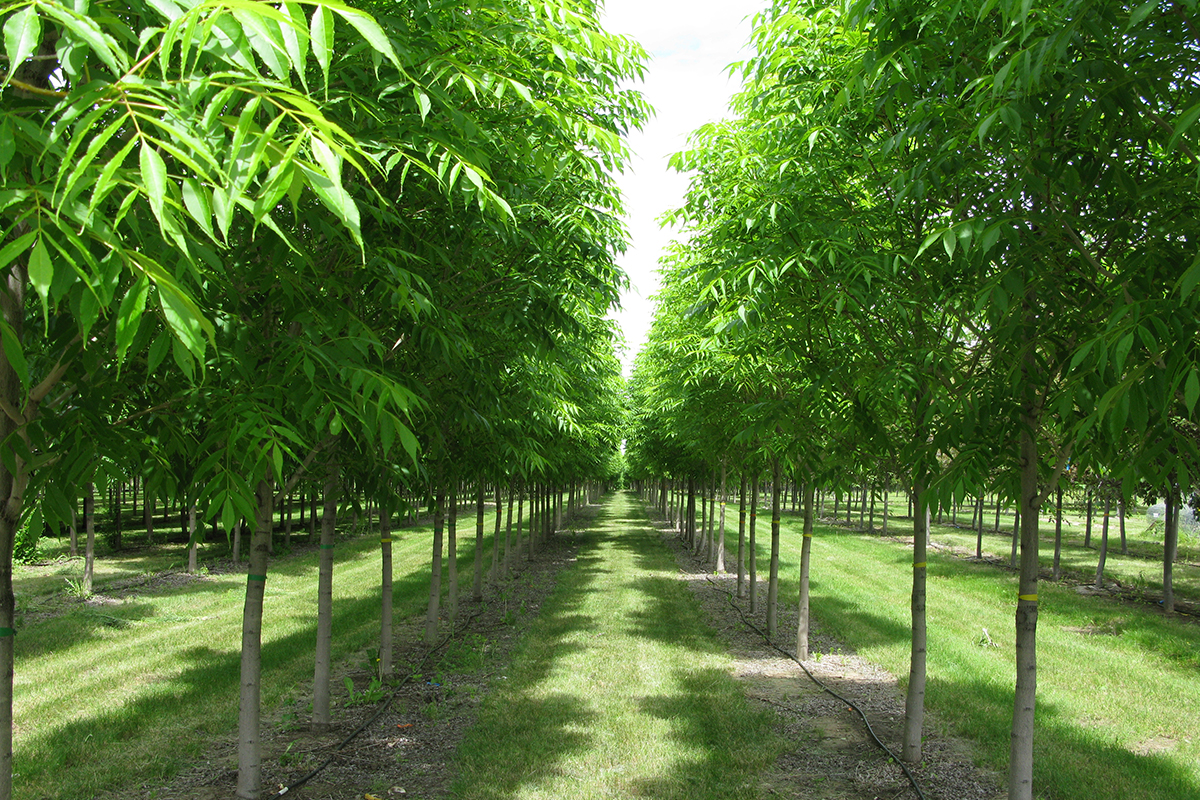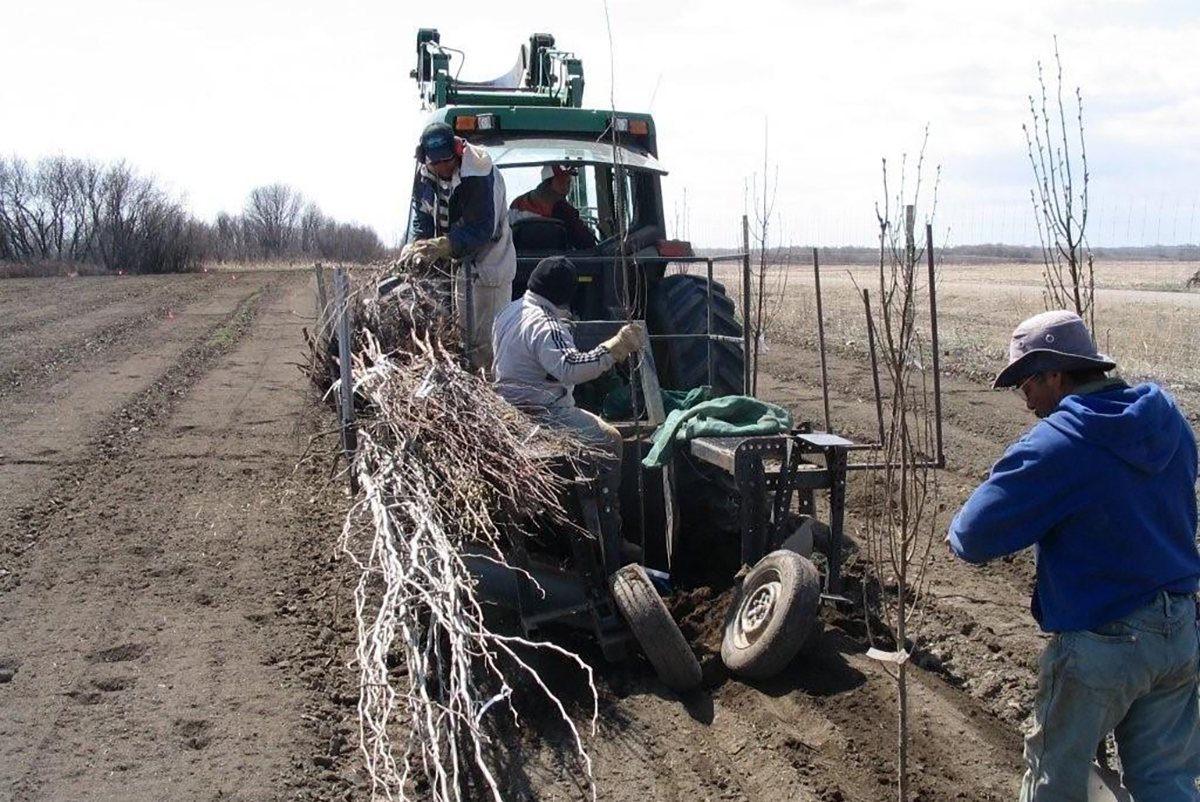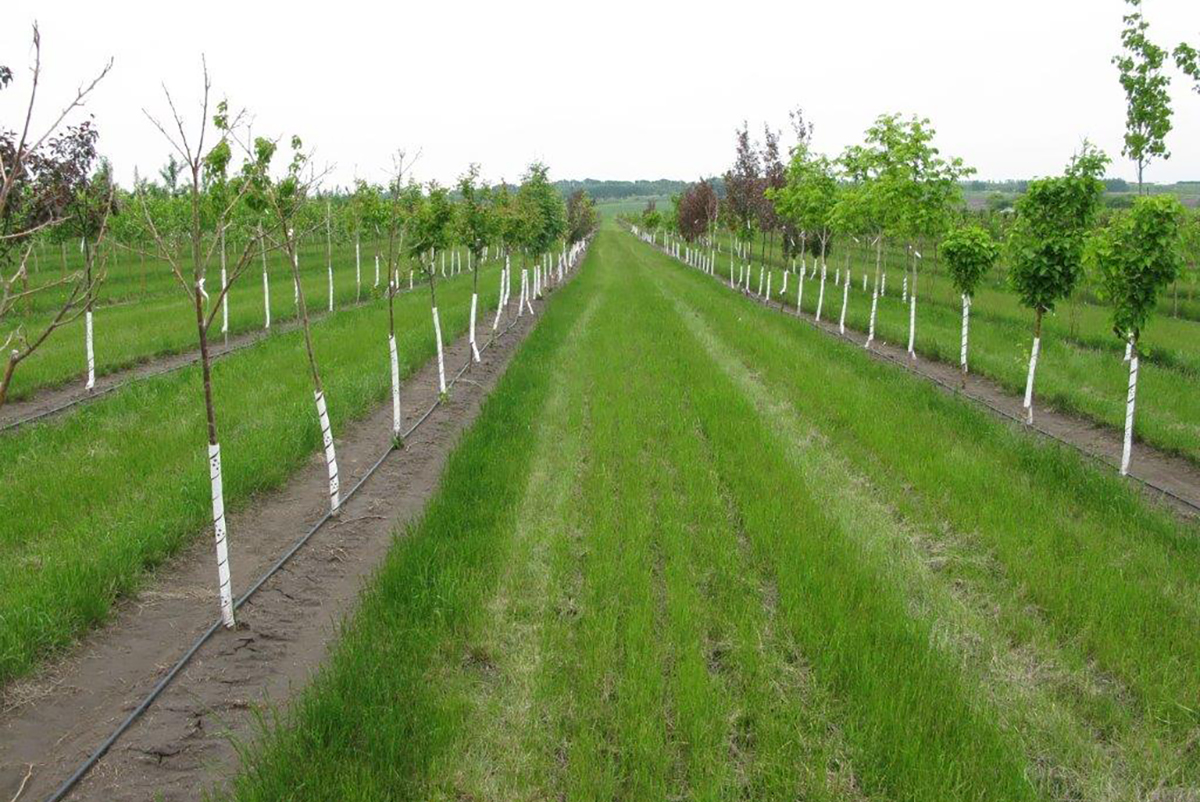How clients communicate their needs to plant suppliers is the top challenge all three growers identified when asked about what most hinders their ability to supply city greening projects effectively. “Our biggest challenge,” says Heuver, “is how people order. For us, communication is very important – and yet, on all levels, we are left out.”
“At a municipal level, we are rarely included in discussions about landscape specifications or planting strategies. If growers can have at least an idea of municipal ambitions and plans – in terms of how much planting is planned, the types of areas to be planted, the profiles of species that will be needed, then we can make adjustment to our production systems. Growers, at a minimum do really need a seat at the table.” As further explained below, this is especially important for products that have long lead times, such as trees.
“At a project level,” Heuver further explains, “while many of our clients order ahead of time in the autumn or early winter prior to when they want to plant, if delays occur, we are often not notified about it until the end of the following summer. Even though it is quite likely that the project manager would know at least two months in advance whether the project inauguration date will be met or not, we are not kept in the loop…
“Because winters are so harsh, if we are only notified at the end of the growing season that plants due to be planted will not be used, it means that we will probably need to hold these plants over the winter until the next planting season. The costs and missed opportunities associated with this are significant: we could have sold these plants and grown new ones instead. Currently the production costs are such that we have very little room for manoeuvring. Therefore, this issue of better communication is really important. We need to know at least within the growing season what will be happening to the plant materials we grow, whether they will be used or not.
“To try and incentivise better communication at least within projects, we come up with some measures – like holding charges – but,” Heuver further observes, “it’s not very satisfactory, and our ability to implement this on a truly systematic basis is limited. If you ask for something but your competitor doesn’t, it’s a position that is difficult to hold.”
The demand for plants to supply city greening is growing. It also involves more complex specifications. There is greater demand for native plants, genetically diverse sources, and wider species selection. Novel approaches to conditioning that facilitate rapid plant growth in green roofs, green walls, and other highly engineered environments are also popular. These trends are requiring not only plant growers but also their clients to adapt. For the latter, this means at times taking on some of the risks involved in producing plant products for which there is high level of demand uncertainty.
“There is a profound lack of understanding about the production process, and the need for clients to take some responsibility in their approach to plant procurement”, explains Eagle Lake Owner, Anita Heuver. “We were requested last year to work on a project involving onsite seed collection, propagation, and repotting – which meant serious upfront investment for us. The purchaser was surprised that we wanted some payment to take place before the shipping of the plants. Collecting seeds and propagating them is specialised work that we contract out, but our client was blind to this. In the end we found an agreement where they accepted to cover any losses and pay for the plant materials by the end of the year following production whether the planting will go ahead as scheduled during the target growing season or not. But this idea that we would ask them to take some responsibility in this process was quite shocking to them,” Heuver recalls.
By contrast, for more specialised growers, asking clients to put a deposit down when ordering is not uncommon. Eagle Lake Turf Farms Ltd/EcoLogic Horticulture is one of the LiveRoof TM regional growers. LiveRoofTM is a proprietary green roof product which relies on regional plant growers across the US and Canada to provide a suitable plant mix for its installations. “We have a position that is different in the market. In central Canada, we are the sole plant supplier for LiveRoofTM, and the region has a small green roof industry. By contrast in Toronto or in Chicago, if a purchaser does not want to pay a 50% deposit fee that is requested, they can easily use another product,” explains Nathan Gill, the nursery’s CEO. Eagle Lake Turf Farms Ltd also grows native sod, nursery grown turf that is vegetated with native plant material, and native shrubs. “We can explain to our clients that this is not something there is sustained demand for, this is something we will put into production especially for you, according to your specifications, so we need a deposit.”
Whether for green roof modules, grasses, perennial or willow shrubs, production lead time are short enough to allow for such approach to be practical for plant buyers. By contrast, with typical lead production time of seven years or more, amenity trees pose greater challenges.
In the past, across North America, university organisations and federal, state, or provincial public agencies collaborated to evaluate new plant introductions for hardiness, disease, and insect tolerance. But, as mandates, interests and funding availability changed over time, these groups have largely stepped away. Most of the effort now falls on the nursery industry. The investments involved are significant and rely on a strong collaborative ethos among growers as well as the capacity to tap into grant funding.
“Ideally, we want to be able to collaborate to make such strategic investments,” explains Heuver. “For example, we are part of a trial programme initiated in 2008 by the Western Nursery Growers Group (WNGG). The purpose of this trial was to develop an expanded list of tree cultivars suitable to survive and thrive in the rural and urban forests of the Canadian Prairies. It was initiated in response to the serious risks from invasive pest species such as Emerald Ash Borer (EAB), Dutch Elm Disease, and Cottony Psyllid.”
The trial involved 150 known cultivars that were either new to the area, or previously not in widespread cultivation in the Prairie region but had shown anecdotal evidence of worthiness in these climatic zones or were advertised as such.
“Landscape architects often base their species selection on various internet-based commercial sources that either lack information or have a vested interest in promoting their own products. As a result, projects are being delivered with species that come from further South, many of which die after a couple of years. The landscape contractor gets the blame even if they planted as per specifications, and local nurseries also get a bad reputation if they try to put forward a substitute that will have a better chance to survive… So, we decided to take it upon ourselves to try to look at whether these existing cultivars increasingly marketed as suitable for the Prairies were nursery-friendly – in other words: whether they were worth growing. This first phase of the trial was primarily focused on nursery production,” further explains Krahn.
Six nurseries, including Eagle Lake and Lakeshore, volunteered field space to accommodate the trees to be trialled. These nurseries also donated their time and expertise to look after the trees for the duration of the project. The trees involved were supplied free of charge or at a 50% discounted rate by some of the WNGG growers as well as other suppliers to the Prairie market. In-kind contributions from the WNGG allowed the project to pursue match-funding from the Advancing Canadian Agriculture and Agri-Food (ACAAF) grant programme, a scheme designed to support competitiveness and innovation in the Canadian agriculture and agri-food sector. Succeeding in tapping into ACCAF funds for the trial was not straightforward as the province-based agencies responsible for administering the programme had never before received applications related to amenity trees. “Responsibilities for amenity trees fall somewhere between Agriculture and Forestry, and rarely do you see funding for research, development and innovation targeting horticulture tree programmes,” explains Rick Durand, an independent expert tree breeder who volunteered to manage the grant application process. Funding was also secured via the Agri-Food Research and Development Initiative (ARDI), which supports industry-led research and development projects in Manitoba’s agriculture and agri-food industry. The ACCAF and ARDI funds covered some project costs, including the implementation of a robust monitoring programme that Rick Durand delivered.
The tree genera tested included several species, cultivars and hybrids of maple (Acer), birch (Betula), ash (Fraxinus), ornamental crab (Malus), poplar (Populus), cherry (Prunus), oak (Quercus), willow (Salix), linden (Tilia), elm (Ulmus) and others. Monitoring was conducted on a yearly basis. The data collected was used to give each of the 150 cultivars trialled one of four ratings:
- “Recommended”: for trees that displayed less than 10 percent winter damage, high to complete disease and insect resistance, good adaptation to prairie soils, superior ornamental value and were commercially available.
- “Marginal”: for trees that sustained 10 – 50 percent winter damage but otherwise had high to complete disease and insect resistance, good adaptation to prairie soils, superior ornamental value and were commercially available. Such trees, the trial concluded, may perform better in protected microclimates e.g. a sheltered back garden.
- “Not Recommended”: for trees that displayed unacceptable winter damage (greater than 50 percent winter kill) and/or had high disease or insect susceptibility. Communications on the findings from the trial emphasised that knowing what varieties to stay away from is seldom reported but is as valuable knowing as what varieties perform well.
- “Need More Information”.
The results of this first phase of the trial also helped establish geographic variation: southern Manitoba was found to have the greatest number of tree choices while Saskatoon had a much smaller list of recommended trees. All results were published in 2016 on the WNGG’s website.
A second phase of the trial was initiated in 2020, with a partially different set of participants and will run until 2025. This second phase was designed to trial 87 new varieties that were not part of the first trial. Funding for this work relied again on a wide pool of sources (see Funding mechanisms). As earlier, in-kind contributions from growers were critical in opening access to provincial or federal grant sources.
A third phase of the WNGG trial is expected to begin sometime after 2026 and will include new trees that have been developed since 2020 or trees developed before 2020 that have not been available due to problems with propagation. The WNGG has asked breeders to provide a list of trees that they want tested so that by 2027 there will a good supply of new trees to be planted at the start of the trial. In previous phases, the lack of a suitable number of quality trees available at the start of the trials has been an issue.
In parallel to the WNGG trials, the Landscape Alberta Nursery Producers secured a provincial grant to conduct a tree trial across 15 Municipalities in Alberta. This trial which started in 2021 is designed to monitor 25 of the “recommended” cultivars from the graduates of the first phase of the WNGG to assess their adaptation to an urban landscape. Results are expected by mid-2023.
As the research projects identified above demonstrate, a wealth of knowledge exists within the growing industry on species selection. Yet, channels of communication between growers and specifiers are hampered by mistrust. “Local growers are unfortunately not seen as a reliable source of information, although those family businesses have accumulated relevant experience over three or four generations. No one has the experience a calliper tree grower has with observing tree selections over time. But we are not seen or used as a primary source of education regarding species selection,” observes Aaron Krahn, the director of Lakeshore Tree Farms.
Expert breeder Rick Durand concurs: “The communication between the prairie horticulture growers and the municipalities (cities and towns) is limited and sometimes strained due to conflicting views. There is little communication between the growers and smaller towns since the smaller urban centres rarely have employee(s) dedicated to just tree management. Meanwhile, the communication between the prairie horticulture growers and landscape architects is minimal. It has been my experience that landscape architects rarely attend education sessions that have been sponsored and supported by the growers.”
With the role of trees and other vegetation in creating healthy, climate-resilient cities attracting wider recognition, all remain nonetheless optimistic about prospects of future improvements. Communication around the findings from the WNNG and Landscape Alberta trials is perceived as essential. “A lot of education is needed in respect to species choice: professionals, such as architects, often tend to stick to a very narrow palette when there is a much wider variety of species or cultivars that would work well in their projects,” explains Heuver. “Within the wider public, there is also the need for a much-enhanced understanding that a lot can be done: everyone can take on the climate change agenda, either by requesting action from municipal leaders, and/or by taking action in their own yards, using the right species.”
Another channel of communication growers are keen to open is that of planting conditions.
“Rather than solely focusing on diversification, we need to consider how to get more trees succeeding in the landscape. The scream for diversity started with EAB. Ash and Elm were all that was planted in the past, because they were fast growing, seedless, adaptable to our soil, height headed, etc. And then the question everyone asked was: what do we plant instead of Ash and Elm? I believe that’s not the sole question that should be asked. Instead, we should also be asking: how do we prepare our landscapes for the trees that are available?” highlights Krahn. “The solution to the challenge of diversification is not in plant selection alone: you need to adapt the planting specifications and the soil preparation to create the fertile landscape that allows for successful diversity. It starts with soils – but no one sees it. They see new advertising for new trees.”
“Another challenge we face is the growing sophistication of the landscaping projects out there in response to the climate adaptation agenda, and the lack of corresponding upskilling of the landscaping industry to deliver such projects,” explains Heuver.
“It used to be that landscapers could work with very little-trained workers – those days are over, she emphasises. You need to know what you are doing when installing a green roof, or a green wall, or conducting a large-scale tree planting campaign. You need to be qualified for it.”
The contemporary growth of landscape industries has led to a crippling skills gap. A lack of training facilities has meant that employers have been experiencing significant difficulty when attempting to either upskill their current workforce or recruit trained personnel.
“What regularly happens is that the lowest bidder wins the contract, does a poor job of it, and so doesn’t get paid until a lot of extra effort has been put in to get things right. In the meantime, we, the plant supplier, do not get paid either although the plant materials we have supplied have nothing to do with the problem at hand. Municipalities must ask for the credentials of their suppliers and take levels of qualification of the workforce as a criterion when choosing bids. Professionalism is really needed,” emphasises Heuver.
“There is currently such a big window of opportunity in promoting our industry as a provider of solutions to the climate change adaptation and public health agendas, and we don’t want that blown by poor standards of installation, resulting in people turning to different solutions,” Heuver concludes.



















